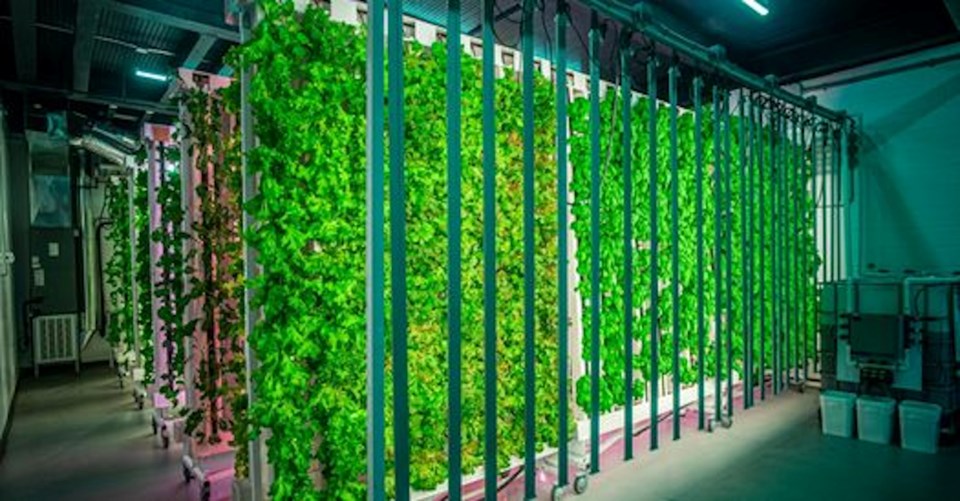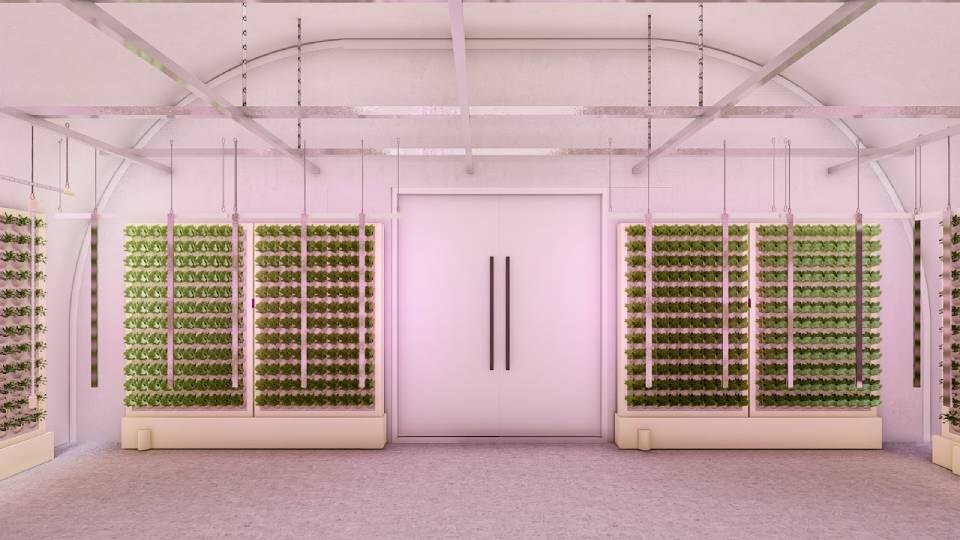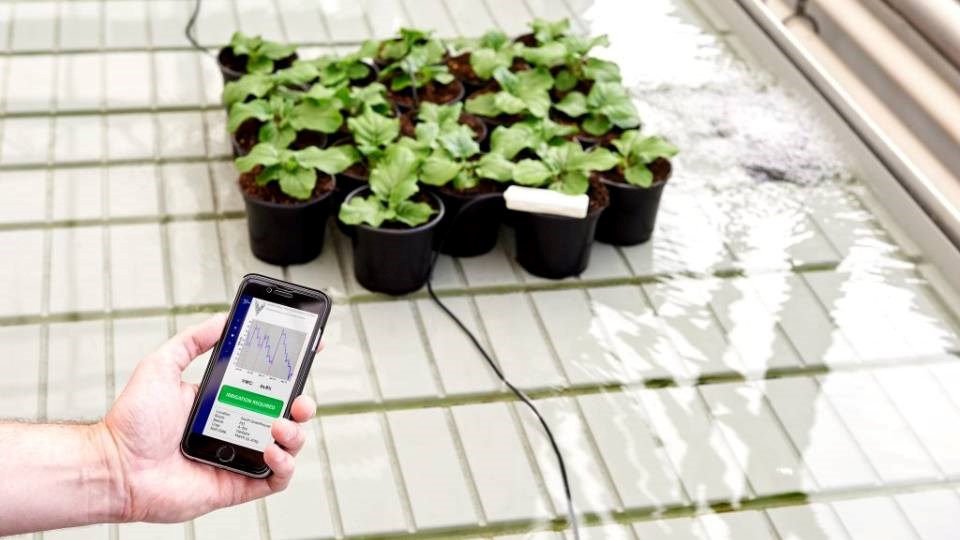In Northern Ontario, where the growing season is shorter and the climate is harsher, producers are turning to technology for innovative solutions to extend their seasons.
But technology alone isn’t enough to address the myriad challenges facing horticulture in the North, as growers and stakeholders learned during a recent panel discussion hosted by the Northern Ontario Farm Innovation Alliance (NOFIA).
The talk stemmed from a recently published report — Technology Roadmap to Northern Ontario Horticulture — which was a joint effort of NOFIA and the Vineland Research & Innovation Centre.
Benjamin Feagin, a cofounder of the container farm AgriTech North in Dryden, noted that one of the biggest challenges for northern growers is distribution.
Launched in 2022, AgriTech North is an indoor growing operation that utilizes vertical grow towers and specialized lighting to create a climate-controlled, pest-free environment for its vegetable crops.
Without a regional distribution centre, food producers like Feagin are responsible for getting their products out to clients, he noted, and that can add significantly to their production costs.
“That’s what makes it difficult to stimulate small business in the food sector in remote communities is the cost of transportation,” he said.
In September, Loudon Brothers, a long-time local distribution and logistics firm, closed its doors permanently after operating for more than 60 years in the region, Feagin said. That’s left local food producers with few distribution alternatives.
Feagin said a group of local stakeholders is embarking on a fundraising campaign to help fill the gap.
“It’s a significant problem,” he said.

Tina Quinn, a cofounder of Three Seeds Corp. in Thunder Bay, said pricing is also a barrier for local food consumption.
It’s difficult for small food producers to compete with the pricing offered by larger foodservice and distribution companies, yet those larger companies can’t compare on quality and freshness.
Three Seeds Corp. is a fledgling startup that uses indoor grow towers to produce leafy greens. Because the produce is grown close to home, it’s fresher and has a higher nutrient content than similar products shipped from hundreds of kilometres away, Quinn said.
She believes it will take producers “re-educating” the public on the importance of high-quality food before people will be willing to pay more for those products.
“I just want to… really show people the value of our foods,” she said. “People think they're eating healthy, but they're really not and it's not local.”
To mitigate some of the costs, Dan Bath, a research scientist with the Vineland Research and Innovation Centre, said there are existing “age-old technologies” — such as hoop houses and row covers — suited to outdoor growing that can help producers push production into the shoulder season.
Want more business news from the North? Sign up for our newsletter.
At Vineland, researchers have also developed, and are continuing to develop, new crop varieties that thrive in colder temperatures, like those experienced in the North.
Bath used the example of the "Radiance” sweet potato, a variety of the root vegetable developed by Vineland in collaboration with Louisiana State University.
Sweet potatoes are typically shipped in from Texas or Mexico, but Radiance is the first variety developed by Canadians for Canadians, according to Vineland.
“There are always new varieties coming out that may be more suited to your growing environment, whether that's a challenging outdoor growing environment, and also there's a lot of variety development that is geared toward automation and also indoor growing, particularly indoor farms,” Bath said.
Food Security Structures Canada is a London, Ont.-based ag-tech company producing turnkey indoor growing systems that enable farmers to grow year-round regardless of climate or location.
President-CEO Kim Parker believes that, in general, indoor and outdoor growers can work together to find solutions to common growing problems.
Rather than working in silos, Parker suggested indoor growers should “work in harmony with outdoor traditional land-based farming — greenhouses, hoop houses — to be able to look at how these different systems can work together and leverage the strength of each one of them.”
With their growing systems, her company sells an anaerobic biodigester, which works much like composting to break down biological waste, resulting in a nutrient-rich liquid.
“We have a number of farmers who have used that for soil regeneration outside to be able to put that out on their field crops, their pasture land,” Parker said. "They've seen an improvement in the soil structure and the fodder that they've had for their animals.”

At the Harrow Research and Development Centre, operated by Agriculture and Agri-Food Canada, engineer Quade Digweed works on developing new greenhouse technologies.
One of his areas of focus is working with commercial greenhouses to reduce their greenhouse gas emissions, which includes the electrification of greenhouses and employing heat pumps, in addition to taking advantage of hourly energy pricing and energy storage.
Digweed said his most successful projects usually result from direct collaboration with a grower, developing technology right on the farm.
Because farmers have intimate knowledge of how things work on their farm, they can tell immediately whether or not an idea will work, he noted.
“That’s been really helpful for us, because lots of times, there’s been idiosyncrasies you find on a farm that will just make a technology non-feasible, if you’re not aware of it in the development process,” he said.
In one example, Digweed said, a company wanted to develop smart sensors for farms. But it would have required installing 120-volt outlets across a farmer’s acreage.
It turned out to be cost-prohibitive — installation of the outlets would have cost more than the sensors, Digweed noted — and that pushed them in the direction of solar-powered technology instead.
Direct input like that enables researchers to “avoid going down the rabbit hole and having to redesign” the product, Digweed said.
Though the benefits of technology are many, Bath said sometimes the biggest challenge can just be getting the technology to market.
Technology is expensive to commercialize, he noted, and farmers are hesitant to make an investment in unproven technology.
Third-party validation would go a long way to reducing the risk to farmers, to take the pressure off growers to invest in a technology they know little about.
“In many cases, there’s plenty of technologies around the world that can be applied to horticultural challenges,” Bath said, “but as anyone who’s worked in technology development can tell you, it's very difficult to get technology commercialized.”




